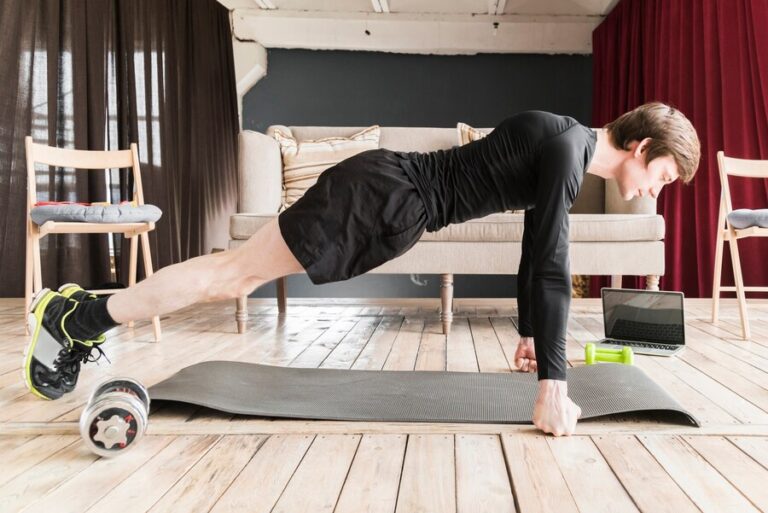Introduction
In the realm of fitness, balance is key. While many people focus on push exercises like bench presses and push-ups, it’s equally important to incorporate pull exercises into your routine. Horizontal pull exercises are particularly effective for building a strong, well-rounded upper body. This guide will explore the benefits of these exercises, different variations, and how to integrate them into your workout regimen.
What Are Horizontal Pull Exercises?
Horizontal pull exercises involve pulling a weight or resistance towards your torso in a horizontal plane. These movements primarily target the back muscles, including the latissimus dorsi, rhomboids, and trapezius, as well as the biceps and forearms.
Benefits of Horizontal Pull Exercises
Balanced Muscle Development
Horizontal pulls help balance the development of the muscles in the upper body, ensuring that the back muscles are as strong as the chest muscles. This balance reduces the risk of injury and improves overall posture.
Improved Posture
Strengthening the back muscles through horizontal pull exercises can correct poor posture caused by prolonged sitting and forward-slumping shoulders.
Enhanced Athletic Performance
For athletes, a strong back is crucial for performance. Horizontal pulls improve overall upper body strength, which can translate to better performance in sports like swimming, rowing, and climbing.
Injury Prevention
A balanced workout routine that includes horizontal pull exercises can prevent injuries by strengthening the stabilizing muscles around the shoulder and spine.
Top Horizontal Pull Exercises
1. Bent-Over Rows
How to Perform:
- Stand with feet shoulder-width apart, holding a barbell or dumbbells.
- Bend at the hips, keeping your back straight and core engaged.
- Pull the weight towards your torso, squeezing your shoulder blades together.
- Lower the weight back to the starting position.
2. Seated Cable Rows
How to Perform:
- Sit at a cable machine with your feet on the platform and knees slightly bent.
- Grab the handle with both hands.
- Pull the handle towards your abdomen, keeping your elbows close to your body.
- Slowly return to the starting position.
3. Inverted Rows
How to Perform:
- Position yourself under a bar, gripping it with hands shoulder-width apart.
- Extend your legs out in front of you and hang underneath the bar.
- Pull your chest up to the bar, keeping your body in a straight line.
- Lower yourself back down with control.
4. T-Bar Rows
How to Perform:
- Stand over a T-bar row machine and grab the handles.
- Keep your knees slightly bent and your back flat.
- Pull the bar towards your chest, squeezing your shoulder blades together.
- Return to the starting position.
5. One-Arm Dumbbell Rows
How to Perform:
- Place one knee and hand on a bench for support.
- With the other hand, hold a dumbbell.
- Pull the dumbbell towards your hip, keeping your elbow close to your body.
- Lower the dumbbell back to the starting position and repeat on the other side.
6. Face Pulls
How to Perform:
- Stand at a cable machine with a rope attachment.
- Pull the rope towards your face, keeping your elbows high and squeezing your shoulder blades together.
- Slowly return to the starting position.
7. TRX Rows
How to Perform:
- Hold the TRX handles with your body leaning back.
- Pull your chest towards the handles, maintaining a straight body line.
- Lower yourself back to the starting position.
How to Incorporate Horizontal Pulls into Your Routine
Balanced Workout Plan
Ensure your workout routine includes an equal number of push and pull exercises. For example, if you perform bench presses and push-ups, balance these with rows and face pulls.
Progressive Overload
Gradually increase the weight or resistance you use in horizontal pull exercises to continue building strength and muscle mass.
Proper Form
Always prioritize proper form over lifting heavier weights. Incorrect form can lead to injuries and reduce the effectiveness of the exercise.
Frequency
Aim to include horizontal pull exercises in your routine at least twice a week. This frequency helps maintain muscle balance and promotes steady strength gains.
Common Mistakes to Avoid
Rounding the Back
Avoid rounding your back during rows or pulls. Keep your spine neutral and engage your core to prevent injury.
Using Momentum
Relying on momentum to lift the weight reduces the effectiveness of the exercise. Focus on controlled movements and muscle engagement.
Neglecting the Eccentric Phase
Don’t rush the lowering phase of the exercise. Slow and controlled eccentric movements contribute significantly to muscle growth and strength.
Conclusion
Horizontal pull exercises are an essential component of a balanced fitness routine. They not only enhance muscle development and posture but also improve athletic performance and prevent injuries. By incorporating exercises like bent-over rows, seated cable rows, and inverted rows into your workouts, you can achieve a stronger, more balanced upper body.
FAQs
What muscles do horizontal pull exercises target?
Horizontal pull exercises primarily target the back muscles, including the latissimus dorsi, rhomboids, and trapezius, as well as the biceps and forearms.
How often should I do horizontal pull exercises?
Aim to include horizontal pull exercise in your routine at least twice a week to maintain muscle balance and promote steady strength gains.
Can horizontal pull exercises improve my posture?
Yes, strengthening the back muscles through horizontal pull exercise can correct poor posture caused by prolonged sitting and forward-slumping shoulders.
What is the difference between horizontal pull and vertical pull exercises?
Horizontal pull exercise involve pulling a weight towards your torso in a horizontal plane, targeting the mid-back muscles. Vertical pull exercises, like pull-ups, involve pulling a weight vertically, targeting the upper back and shoulders.
Are horizontal pull exercises suitable for beginners?
Yes, horizontal pull exercise can be modified to suit all fitness levels. Beginners should start with lighter weights and focus on proper form to prevent injury.

